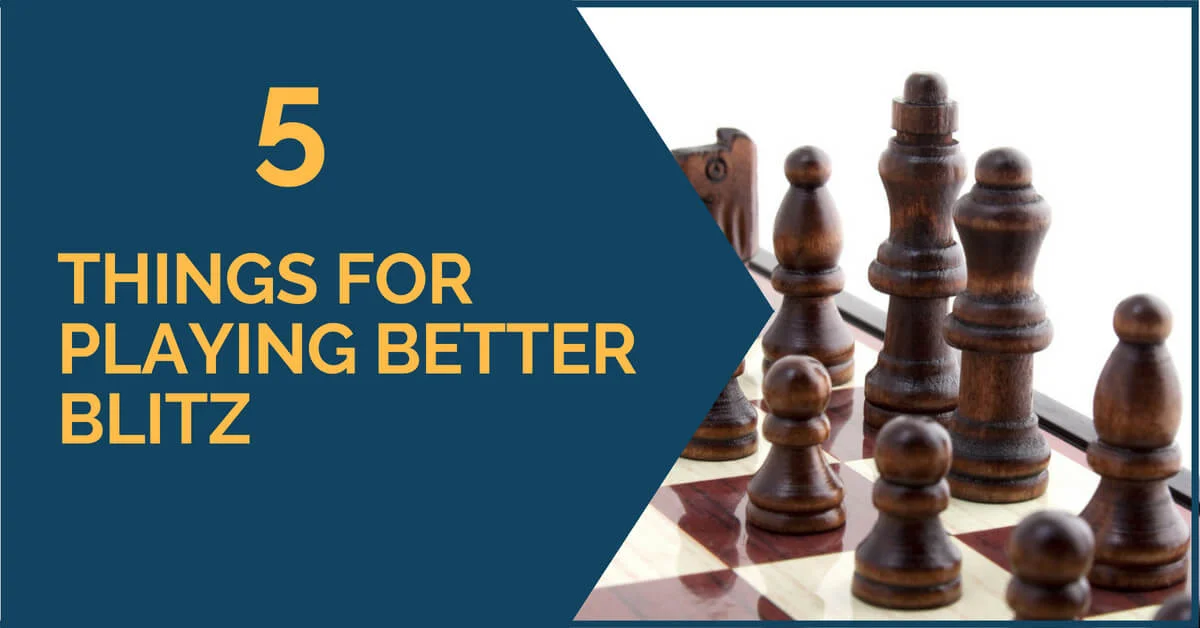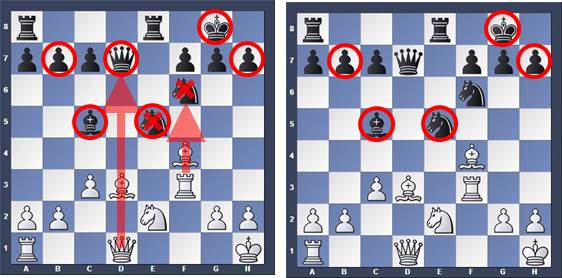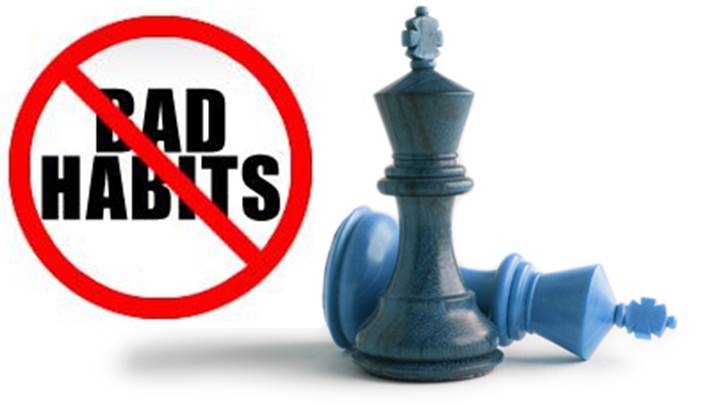Finding Strengths and Weaknesses of Your Chess
Many people ask me over and over again how to improve their chess game. I have written multiple articles on this theme including How to get better at chess: guide for all levels and Chess self improvement guide (if you haven’t yet, you may read them as well).
Today I will give you some practical advice that will help in chess training process. You will learning your strengths and weaknesses through opening and middle game classification and analyses.
1. Opening classification and analyses of results
When I tell chess players to analyze their play they say well, I have already analyzed my games. What they don’t understand is that not only they need to analyze their particular game, but also they need to analyze their chess play in general. What do I mean by that? Imagine a player who has played 15 tournament games in his chess career. The opening of these games and the results are distributed as following:
Queen’s Gambit Declined: won – 3, lost – 0, draw – 1
Ruy Lopez: won – 0, lost – 2, draw – 0
Petroff Variation: won – 1, lost – 1, draw – 0
Sicilian Defense: won – 0, lost – 3, draw – 0
King’s Indian Defense: won – 3, lost – 0, draw – 1
From this little statistics it is possible to draw some conclusions about our player:
– Queen’s Gambit Declined and King’s Indian Defense are the most successful openings resulting in least amount of loses and highest amount of wins
– Sicilian defense and Ruy Lopez don’t work well for this player and need to be switched to some other opening
– There aren’t many conclusions can be made from Petroff’s statistics yet
The point I’m trying to make is simple, in order to understand what kinds of positions you understand the best you should look at the openings you played in your games and see the results you achieved. If you start seeing patterns, for example good results in one opening and bad in the other one, you should substitute the bad opening with something else, while keep track of statistics. Finally, when you find the right choice of opening you results with improve significantly.
2. Middle Game classification and analyzes of results
Some people may disagree with the point I made in previous bullet and say that our imaginary player may have lost 3 games in Sicilian defense due to some other reason rather than the opening. In order to have a more precise “portrait” of a chess player we need to also analyze his middle game/endgame results. We can create analogous table to one above for our player:
Type of Middle Game
Open: won – 3, lost – 0, draw – 1
Semi-Open: won – 4, lost – 3, draw – 1
Closed: won – 0, lost – 3, draw – 0
Chess Themes
Sharp Lines: won – 1, lost – 4, draw – 0
Isolated Pawn: won – 0, lost – 3, draw – 2
Center Attack: won – 1, lost – 1, draw – 0
Minority Attack: won – 2, lost – 0, draw – 1
From the above statistics we see that the imaginary player needs to work on his tactics more, aim for open/semi-open position and avoid closed games, especially the isolated pawn ones.
When you create a middle game/chess theme profile for your own play you will learn a lot of useful information about the types of position you play the best and the type of things to work on. The chess theme list can be extended depending on your needs with things like rook endings, pawn endings, opposite side castle, passed pawns, etc.
By combining the opening classification and middle game classification statistics it should be possible to make conclusions about the types of openings and position that suit you the best.
3. Game Analyzes: Pattern Recognition
You should use serious chess games you have played as a learning tool. By serious games I mean the actual tournament games played in the long time control, when you were fully concentrated and focused on the game and played at the max of your chess ability. If you did not yet analyze/annotate your games you may use the following guide how to analyze a chess game to help with your analyzes.
The most crucial part of the analyzes is to draw the right conclusions about strengths and weaknesses of your chess. The ultimate goal is to eliminate your weaknesses and build up strengths.
Check out our store:
Good luck and comment with your results!










Comments: